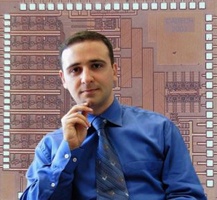Apr 8 2009
Over the past few decades, the transistors in computer chips have become progressively smaller and faster, allowing upwards of a billion individual transistors to be packed into a single circuit, thus shrinking the size of electronic devices. But these circuits have an intractable design flaw: if just a single transistor fails, the entire circuit also fails.

One novel way around the problem is a so-called "self-healing" circuit--one that can detect, isolate, and fix its own flaws, both by working around the defective transistors by modifying the properties of the rest of the system and introducing additional transistors into the system in a seamless fashion.
Such circuits are "inspired by biological systems that constantly heal themselves in the presence of random and intentional failures," says Ali Hajimiri, a professor of electrical engineering at the California Institute of Technology (Caltech).
Toward this end, Hajimiri has been awarded a four-year, $6 million grant by the Defense Advanced Research Projects Agency (DARPA) to develop self-healing circuits for millimeter and microwave frequencies, with applications in imaging, sensing, communications, and radar.
DARPA's Self-HEALing mixed-signal Integrated Circuits, or HEALICs, program is designed to enable the continuation of the Moore's scaling law, which predicts an exponential increase in the number of transistors that can be placed on an integrated circuit (one that performs multiple functions), in the face of inevitable imperfections in those transistors.
"As transistors approach atomic dimensions and run at very high frequencies, even very fine-scale variations within seemingly identical transistors can make a large difference in performance," generating unpredictable behavior, Hajimiri says. "Some circuits may run faster, some slower. Some may actually fail," he says.
Hajimiri's solution is to employ sensors that can detect the conditions within a circuit--and determine, for example, that a particular transistor is not working up to par, or at all--along with actuators that can then modify the system. For example, the actuators could swap functional transistors for failing ones, or add "helper" transistors that would boost the functional capability of a transistor running at sub-optimal speeds. All of these modifications ideally would be made within thousandths to millionths of a second, effectively fixing failing circuits on the fly.
Self-healing circuits are applicable to many integrated circuits, such as the world's first "radar on a chip," a novel radar antenna array system miniaturized onto a single silicon chip, which Hajimiri developed in 2004.
"The way we see it, in a few years seal-healing circuits will allow faster, cheaper, and more robust circuits, making it possible to continue Moore's scaling law by making integrated circuits resemble living organisms in their ability to self-heal and adjust to changes in the environment," Hajimiri says.